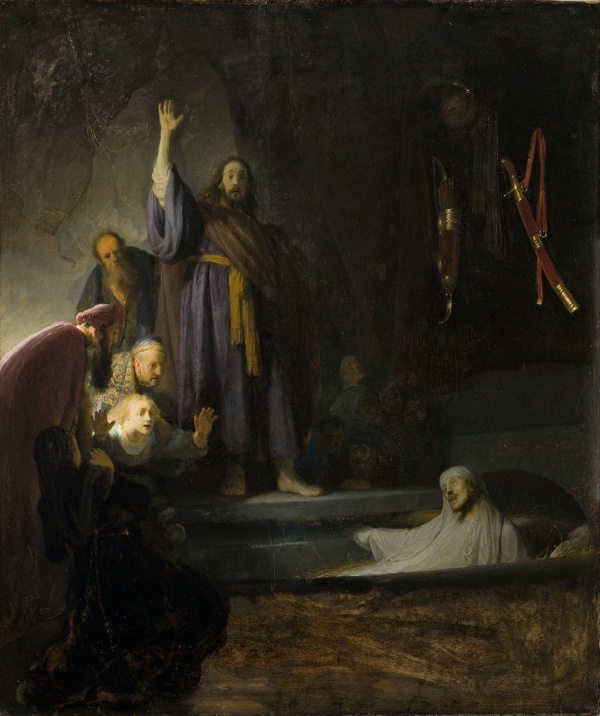Facts About The Raising of Lazarus (Rembrandt)
"The Raising of Lazarus" is a mesmerizing oil-on-panel painting by the acclaimed Dutch artist Rembrandt. Created between 1630 and 1632, this artwork vividly depicts the biblical story from the Gospel of John, in which Jesus brings Lazarus back to life. This captivating piece is housed at the Los Angeles County Museum of Art.
In this painting, Rembrandt masterfully employs chiaroscuro—a technique that uses strong contrasts between light and dark—to draw attention to the central figures and create a striking, dramatic effect. This technique not only enhances the visual impact but also underscores the themes of spiritual renewal and redemption.
Early in his career, while still in Leiden, Rembrandt was influenced by his mentor Pieter Lastman. He explored the same theme in two etchings, each presenting a unique composition. Notably, a 1642 etching portrays Christ in a different light, emphasizing his role as a healer. The friendship between Rembrandt and fellow artist Jan Lievens may have also influenced this painting.
Interestingly, Rembrandt created another painting titled "The Resurrection" around 1635-1639, which bears a strong resemblance to "The Raising of Lazarus" suggesting a continuity in his exploration of resurrection themes.
Initially owned by Rembrandt himself, the painting changed hands several times after his bankruptcy sale in 1656. Eventually, it was acquired by Howard F. Ahmanson, Sr., who generously donated it to the Los Angeles County Museum of Art, where it continues to inspire and awe visitors.

 Mexico
Mexico